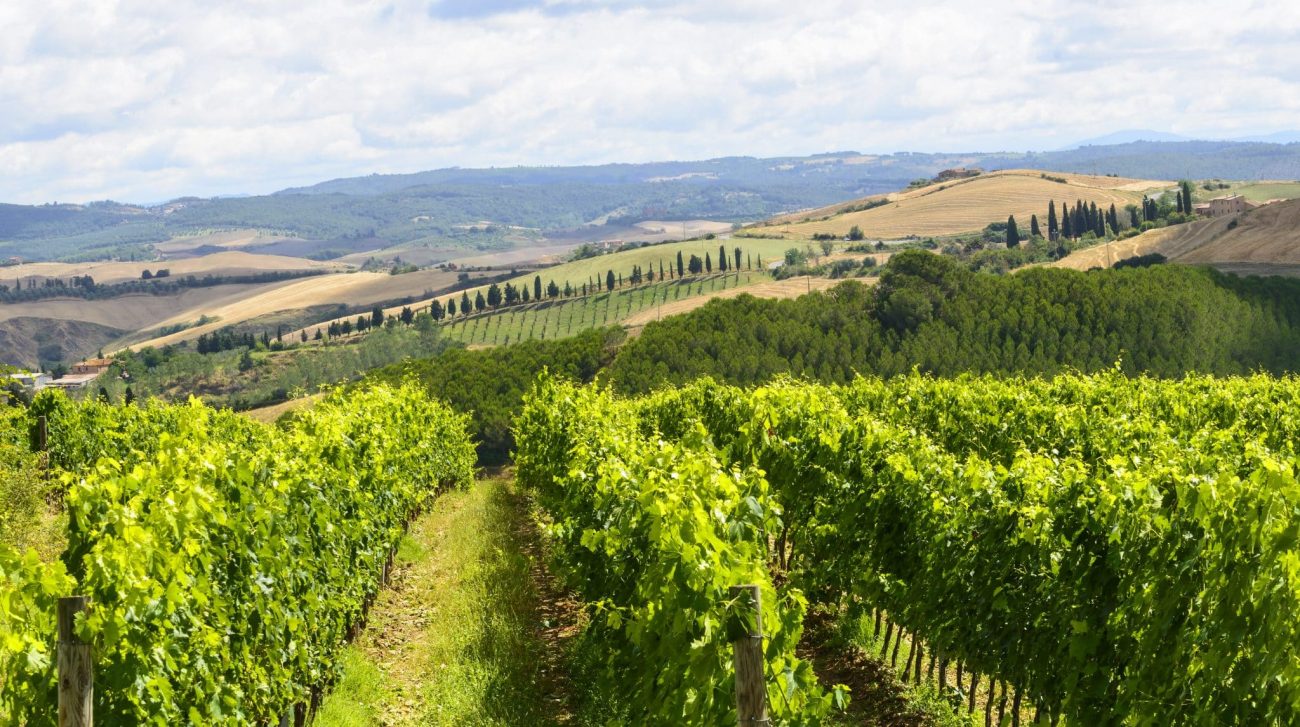On a cloudless summer morning, I followed a winding road south from Heraklion, the capital of Crete, into the dusty countryside. Here, tidy groves of silvery-green olive trees and the occasional bright green stripes of vineyards cloak the valleys like a patchwork quilt. In this part of the island, the most populous of all Greek islands, the vines may well have been Dafni, Pluto or Melissaki, three ancient grape varieties rescued from extinction by Lyrarakis Wines, my destination for the morning.
If you ever need an excuse to taste Cretan wine, here it is. The history of wine on Crete spans more than 4,000 years. The Minoans made it. The ancient Romans drank it. And the island’s wine has been revered in myth, song, and on the daily dinner table ever since.
Traditionally, Cretan families made wine at home from local grapes. Remarkably, 11 varieties have survived. However, as tourism rose in the 1980s, fewer families had time to harvest the grapes for winemaking. Today more than 60 Cretan wineries fill the gap. Many winemakers pair modern methods with European and local grape varieties — with award-winning results.
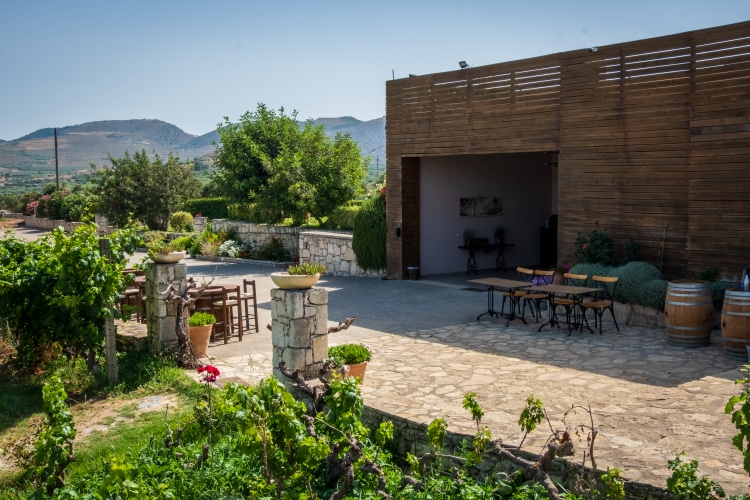
Lyrarakis Wines
Lyrarakis Wines is one of the leaders in Cretan indigenous winemaking. The second-generation, family-owned winery has won a host of international awards. It also boasts top scores for its varietals. Our tour guide explained the careful management of the biodynamic vineyard and the unique grapevine museum, where each of the 11 local varieties grows in its own row. The tour ended with a brief visit to the dimly lit barrel-filled cellar.
Our tasting began with a short introduction and a glass each of Dafni Psarades and Plyto Psarades (the 2020 vintage won a silver medal from the Decanter World Wine Awards). Over the next hour, we enjoyed traditional Cretan dishes as our tasting guide brought more wines to sample, including the garnet red Mandilari Plakoura and the sweeter red Kotsifali Karnari. We finished with what the sommelier described as a sparkling party wine named ZaZaZu. Who doesn’t love a party?
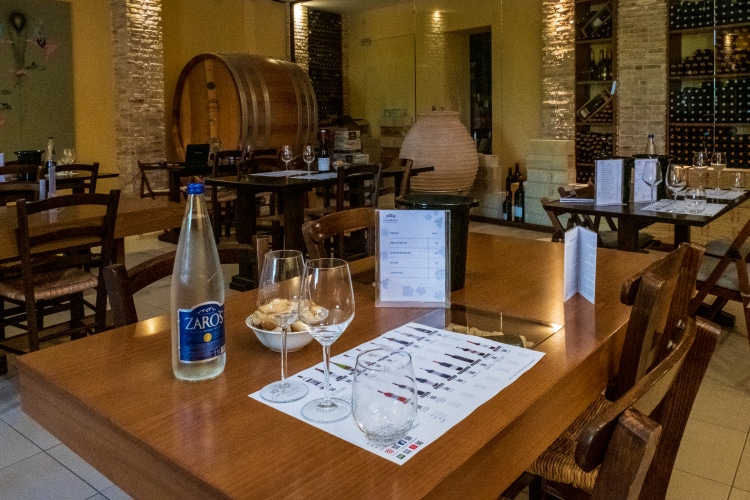
Douloufakis Winery
The Romans definitely liked to party. I pondered their wine preferences on the way to Douloufakis Winery, located on a terrifyingly narrow lane in the village of Dafnes, not far from Lyrarakis Wines. Nikos Douloufakis, grandson of the founder, has been making Muscat, Vidiano and Liatiko wines the old-fashioned way — in 250-liter clay amphoras with minimal intervention — since 2015. Only a thousand bottles of this unusual wine are produced each year.
He also makes wine with modern equipment, as demonstrated by the tour of production rooms filled with towering stainless steel tanks and bottling equipment. In the business-like tasting room, I sampled seven wines, including the Aspros Lagos White (from local Vidiano grapes), which consistently wins medals from Decanter and the Thessaloniki International Wine and Spirits Competition. In addition to Liatiko and other local varieties, Douloufakis also bottles European varieties, such as Chardonnay, Sauvignon blanc and Syrah. One to recommend: Dafnios Red, an award-winning Liatiko wine.
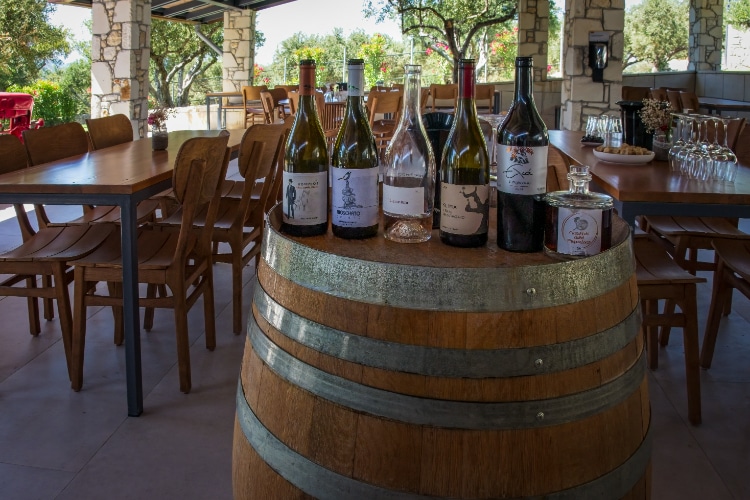
Karavitakis Wines
A few days later, I headed west to the Lefka Ori Mountains. Here olive and orange groves fill the valleys and the grapes grow higher on the slopes. In Pontikiana Village, Manolis Karavitakis continues an 80-year-old winemaking tradition. The stone buildings of Karavitakis Wines nod to tradition, but their sleek lines imbue the winery with a modern feel.
The expansive covered terrace and velvety green lawns easily could have hosted a crowd, but with just three guests on a hot afternoon, the wine tasting experience lost all sense of formality. Our cheerful host poured a new wine every few minutes. We sampled Kompsos, an elegant white blend of Vidiano, Assyrtiko and Malvasia; a floral, aromatic Moschato Spinas; and four more wines. The most unusual was the newly released Geranium rosé, a floral-scented peach-hued wine. The tasting ended on a sweet note, with a liasto Romeiko wine made from late-harvest, sun-dried grapes. The resulting wine tastes almost like Madeira.
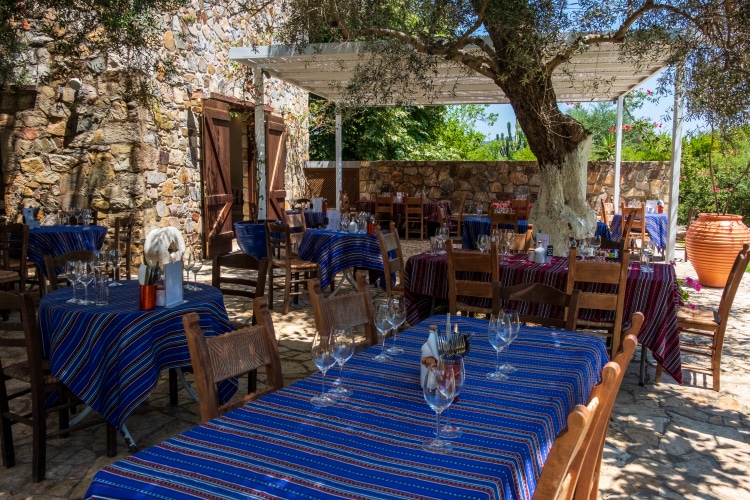
Manousakis Winery
At Manousakis Winery, Alexandra Manousakis took Romeiko grapes in a different direction and won bronze at the Decanter World Wine Awards with Nostos Romeiko, a pale rosé wine. The winery her father founded in 1993 is casually gorgeous. Roses, rosemary and other flowers line terraces and lawns shaded by gnarled olive trees. It’s a perfect setting for wine tastings, dinner under the stars, cooking classes and the other events the winery hosts during the summer.
After a tour of the production facilities, our group spread out on the terrace for wine tasting and lunch on traditional Greek fare. The first pours included a pale gold Assyrtiko and a Muscat of Spina, a medium-bodied white wine. As we sampled Nostos Pink rosé and devoured lunch, the sommelier explained that “nostos” means nostalgia or wanting to return home. Nostos Grenache and a grenache blend rounded out the tasting.
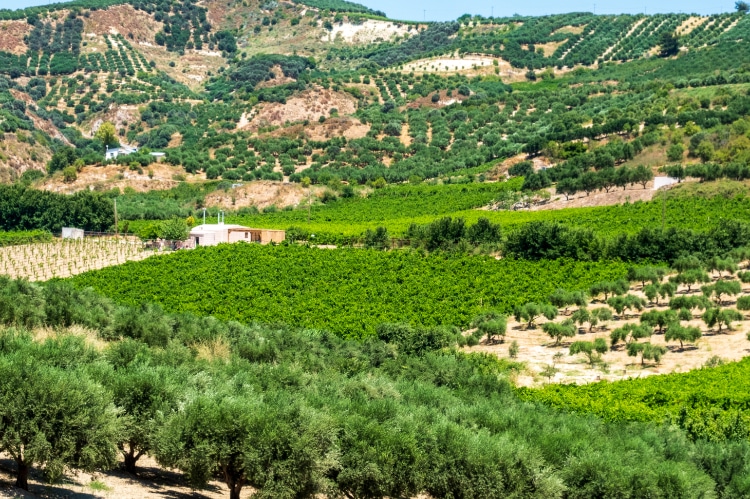
Anoskeli Winery
Anoskeli Winery started as the village olive oil mill before expanding into wine. So, tastings begin with a taste of their award-winning olive oil on the patio outside the tasting room. Our tasting started with a sample of Anoferia Vilana, a refreshing pale gold wine and a charcuterie board. The sommelier set a leisurely pace as we tasted three blends (white, rosé and red) under the Ano Playa label and an Anoferia Syrah. Not on the tasting menu: Stone Wine, which won gold at the Cretan Taste Awards and silver at the Thessaloniki IWSC. We finished the tasting with a shot glass of their gold medal-winning Ano Kato Tsikoudia and a tour of the olive oil mill.
Ancient grape varieties and the occasional amphora notwithstanding, it’s doubtful modern Cretan wine in my glass tastes anything like the wine that filled Minoan cups and garnered fame in Greek mythology. But relaxing in the shade of an olive tree, one thing is clear: the next chapter in Crete’s long winemaking history is just beginning.

